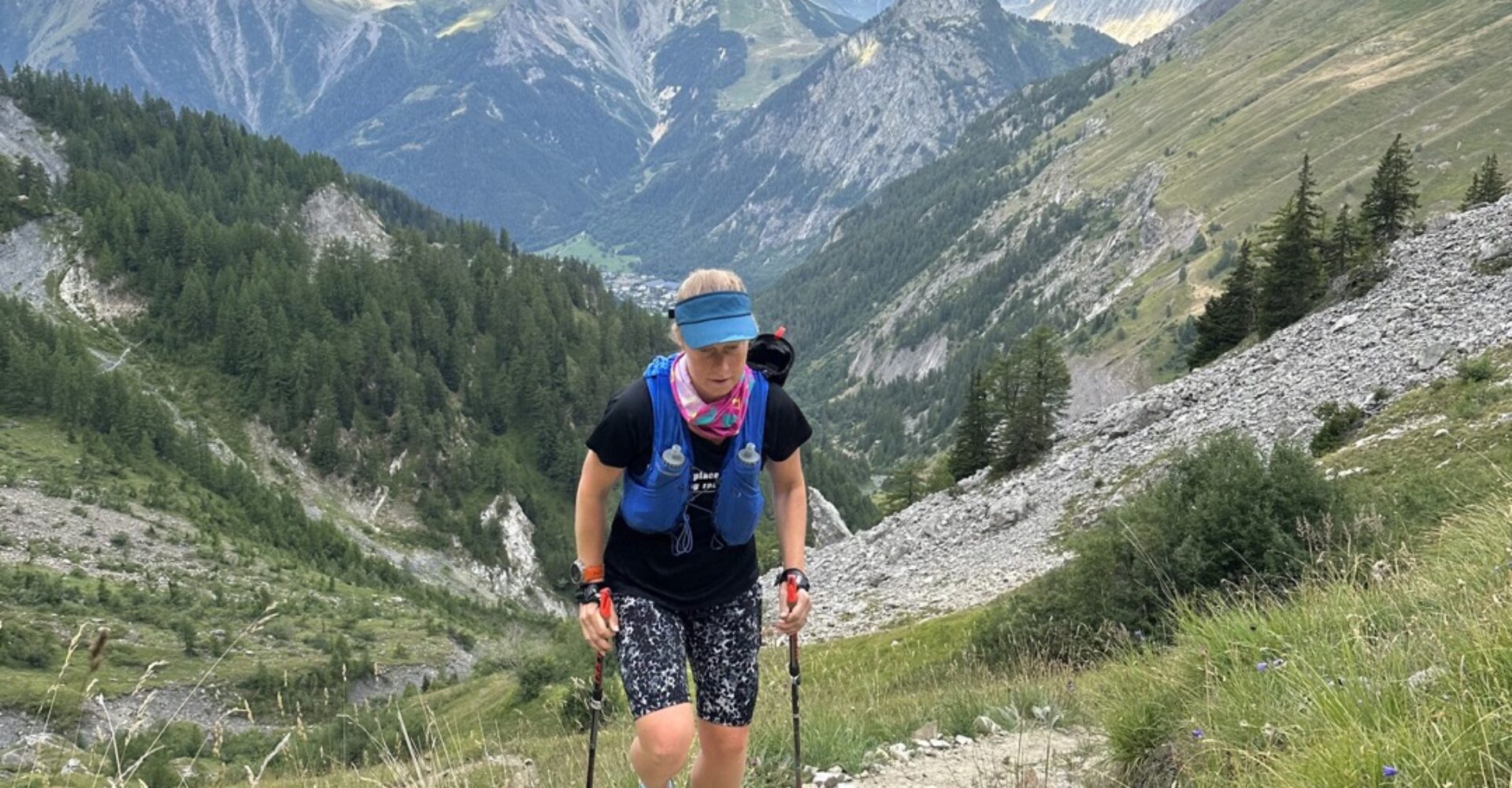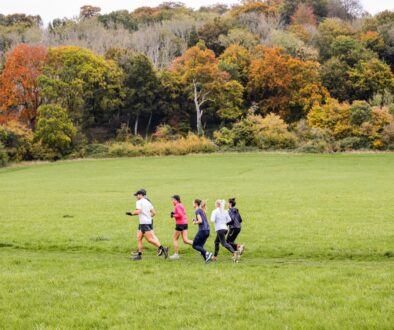Here we look at everything you need to know about trail running poles, from why they help, how best to use them, and what to look for when choosing a pair.
For the first time in the UK we’re seeing a real shift in the perception of running poles amongst trail runners. We’ve seen so many more runners seeing their benefits through our workshops, especially with the rising popularity of mountain races such as the UTMB series in the UK as well as mountain races in the Alps and beyond. Why the hype?
ORIGINS
Running poles found their way onto the trail scene from the popular origins of Nordic skiing which in the late 1970s formally led to its cousin Nordic Walking. Nordic Walking has a passionate following and found fame in the fitness craze it invoked by those wishing to burn more calories vs merely walking back in the 80s. In the last 10-15 years telescopic aluminium walking poles have been replaced by super lightweight, foldable, carbon fibre, trail running poles which tuck away neatly into running vests, now a tool to be wielded readily on any mountainous trail.
BENEFITS
Like any tool, they need to be used effectively to help! Essentially, poles facilitate your upper body strength and core, to assist your lower body. This means you can go quicker and reduce the load on your leg muscles. For most trail runners they will be looking to use the poles to assist them on the uphill and that is where they come into their own. However, they are also effective on the flat, especially on long distances and can assist with stability on downhills (saving your joints too).
Training with poles is important to not only hone your technique but also condition your body. Don’t neglect your other hill sessions as well as practicing power hiking. A lot of UK based runners may question their use and it’s true their use does have a context. In the Alps on a 30-mile race, you will see most of the course participants use running poles, but with a similar distance of rolling hills in the UK maybe no one! That’s because essentially if a course is runnable then it’s arguable that poles are not needed, but if you must walk sections as they are too steep to run, then that’s when poles come into their own.
TECHNIQUE
This is best taught practically. Check out our trail running pole workshops, however, let’s take a look at the key aspects here.
Poles are essentially used for both forward and upward (on uphills) momentum. On flats and mild inclines, the poles should be driving you forward and on steep uphills should lift you up and then drive you forward. Therefore, your running poles should only be placed in front of you when you are going up a steep uphill, otherwise they should be landing next to or behind your feet to keep that forward drive.
Add to that, you can either use the poles ‘alternating’ or ‘double poling – when poles are in synch’ as well as adjusting the number of steps in-between the poles land on the floor. It’s personal preference and you will likely want to vary it to reduce overuse. A rule of thumb is that ‘alternating’ is used when the ground is less steep and even possible for running uphill. When it’s steep and it requires poles to be planted in front, then double poling works best as its stable and assists with the upward drive. When planting poles in front, you need to keep walking past your poles until they assist with your forward drive, to get the most from them. This can almost be a full body movement which engages arms and core when done properly. Most people are tempted to put the poles too far in front of them, so think of a skier starting a downhill race and you’ll have a better posture and pole placement. It’s all about power!
Last couple of tips. When you use alternate poling, keep your arms straight when possible, that will reduce muscle strain. When the ground is steep and that’s not practical, you will need to bend your arms and use your triceps. For uphills, make sure you have your hands in the loops, or you’re attached to the pole (depending on the fixing) this will save your forearm muscles. For anything downhill make sure you are not attached to the poles, as this is dangerous during a fall.
For descents, it’s best to put the poles away and run! However, if they provide stability, confidence and you want to save your joints from impact then wield them, just avoid them becoming a trip hazard for you or anyone else.
One final note, as a pole user make sure you keep an eye out for other trail users, when in a race it is the responsibility of those behind you to keep enough distance, so they are not impaled but you must keep your poles under control, i.e., pointing towards the ground and below knee level is your responsibility!
CHOOSING YOUR POLES
There are a few different companies that make trail running poles. It’s worth, if your budget allows to go for lightweight carbon fibre pole that can be folded into 3 parts. That way you will get the most benefit from using it and will want to use it! Through many years of trying different brands, we recommend Leki Running Poles.
The combination of options is summarised below:
- Material – carbon fibre, aluminium, or a mix
- Hand fixing – no strap, glove strap e.g., shark system, strap
- Collapsing – telescopic or fold away (3 or 2 parts)
- Length – fixed or variable
The best guide for sizing is with your arms by your side and your elbow at 90 degrees, so your forearm is parallel to the floor, measure the distance from your hand to the floor. That will give you the height of the pole required in centimetres. A fixed pole is lighter than a variable and I’d recommend a fixed pole. The only reason I have a variable pole is so that clients can borrow it, but if you like to use them for stability on the downhill, then they are useful, and in that case I’d recommend a system with only a strap. Most people choose a pole too short, always go longer if you are inbetween sizes, remember the poles are 90% of the time driving you forward from behind, so if they are too short, they won’t help.
STORING YOUR POLES
There are a few different methods but the quiver comes up trumps on most occasions. The bungees running vests provide are generally useless and remember you are often trying to remove or stow poles with cold hands and a tired head, simple is the most effective. Running belts can also be effective, but either way you should be able to wield your poles without the need to remove your bag.
FINAL CONCLUSIONS
Trail running poles can aid you on uphills, there is a science behind it plus I can certainly vouch for them from my personal experience. Whether you can or want to use them is up to you. If you do, then it’s worth training with them and learning the techniques to employ them so they do offer you an advantage, whether that is for going quicker, adding to your endurance, saving your joints, adding to your stability or just packing them in the bag in case you encounter stampeding cows (used for this purpose on many occasions!!). Whatever you decide to do, make sure you get out on the trails and have some fun and encourage each other, pole user or non-pole user!
Written by Simon James – Alpine running guide



